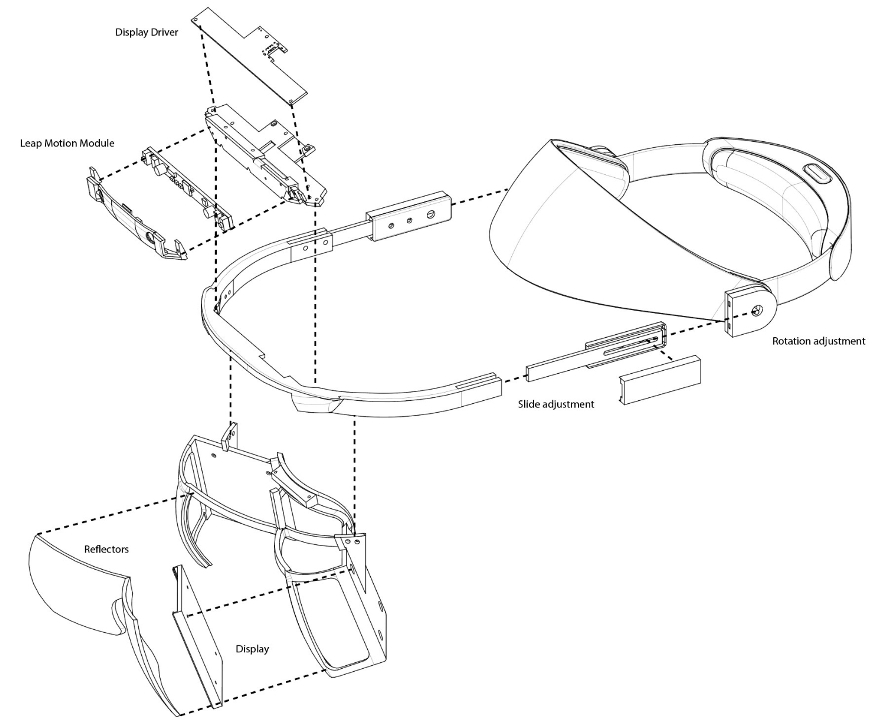Leap Motion Introduces Open-Source AR Reference Headset
Next iteration will include room for the Analogix display driver inside the device.
by Kevin Carbotte April 9, 2018 at 10:15 AM - Source: Leap Motion
.jpg)
Leap Motion is moving into the augmented reality industry, and it’s bringing fresh ideas with it. The company today revealed Project North Star, which is an augmented reality headset that offers a higher resolution, wider field of view (FOV), and higher refresh rate than any other augmented or mixed reality device we’ve encountered. What’s more, Leap Motion figured out how to build the headset for under $100, and it’s giving away the details to help fast-track advancement in AR headset development.
Leap Motion’s Project North Star headset features dual 1,600x1,440 “ultra-bright, low-persistence” displays that operate at 120Hz. The company said it had to develop custom LCD panels for the task because nothing on the market would satisfy the needs of its headset design.
Leap Motion said it first built a prototype with 5.5" 1,440 x 2,560 displays from the smartphone industry, which provided 105-degrees high and 75-degrees wide FOV per eye with a 60% overlap. Leap Motion said the result was a “luxurious” 105-degrees high, 105-degrees wide combined FOV.
Leap Motion refined its design to find a balance between field of view and headset size. The company settled for 95-degrees high and 75-degrees wide per eye with a 65% overlap, which results in higher than 100-degrees of horizontal FOV. Leap Motion said it tilted the view 20-degrees towards the ground, which allows the ground and your body to be within the augmented FOV.
The screens in Leap Motion’s Project North Star headset aren’t installed overhead like in the Microsoft HoloLens MR or the Meta 2 AR headsets. Instead, Leap Motion installed the screens on either side of the headset. The company uses ellipsoidal reflectors (curved mirrors) to direct the image to the headset wearer’s eyes.
Leap Motion built the ellipsoidal reflectors out of optical-grade acrylic, and it milled them with a vibration-free diamond-tipped lathe to create a precision, “optically transparent,” curved lens. The company then coats one side of the lens with a thin silver coating, which reflects 50% of light, and allows 50% of light to pass through, which enables you to see images on the lens while also seeing through the lens.
Leap Motion’s hand tracking technology is also a big part of the Project North Star reference design. The company’s early prototypes featured an external tracking device mounted to the top of the headset, but Leap Motion said the newest revision features tracking sensors embedded into the front of the headset. The existing prototype also features a top-mounted display driver, whereas the next iteration will include room for the Analogix display driver inside the device.
Unbelievably Affordable
Leap Motion said that cost was a priority for the Project North Star headset design. The company stuck with a bare-bones design to ensure the headset wouldn’t be cost effective. Leap Motion said that the design could be manufactured at scale for under $100 per unit, which means it could be marketed for under $200 and remain profitable. When you look at the $1,495 price tag of the Meta 2 developer kit and compare it to Project North Star’s cost, the gravity of what Leap Motion is offering here really comes into perspective.

Leap Motion isn’t planning to build headsets for the consumer market. Instead, the company plans to release what it knows so that anyone can use its design ideas to build marketable products. Leap Motion said that it would release open-source details for the Project North Star headset next week. Hopefully Leap Motion's AR initiative will gain more traction than the company's VR efforts, which never materialized.
